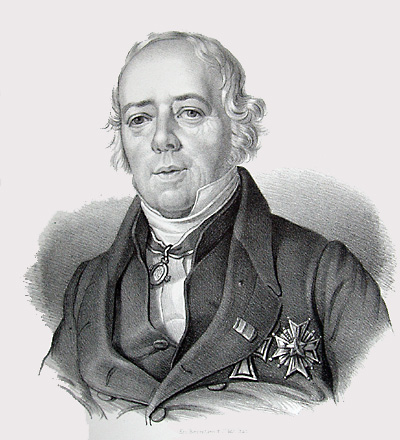Get Today in Masonic History into your Inbox. Sign up today for one of our email lists!
Need an article for your Trestleboard/Newsletter see our Use Policy
Hans Christian Ørsted Passes Away

Today in Masonic History Hans Christian Ørsted passes away in 1851.
Hans Christian Ørsted was a Danish physicist and chemist.
Ørsted was born on August 14th, 1777 in Rudkøbing, Denmark. His early education was largely self taught. He also found a love of science by working with his father in his pharmacy. In 1793 he took entrance exams for the University of Copenhagen. There he excelled academically.
By 1796 Ørsted had been awarded honors for his papers in both aesthetics, the philosophy of art, and physics. In 1799 he earned a doctorate for a dissertation he wrote based on the works of Immanuel Kant, founder of Kantism, which emphasized the unity of nature and deep relationships existing between natural phenomena. The paper was titled The Architectonics of Natural Metaphysics.
In 1800, Alessandro Volta invented a galvanic battery. This inspired Ørsted to think about the nature of electricity. Between 1800 and 1803 he conducted some of his first experiments involving electromagnetism.
In 1801, Ørsted received a traveling scholarship allowing him to visit various countries around Europe. Despite his earlier experiments, Ørsted was more focused on philosophy at this time in his life. After meeting Johann Wilhelm Ritter in Germany who shared his ideas about the link between electricity and magnetism, Ørsted shifted his focus from philosophy to physics. Kantism continued to be a guiding principal in his life.
In 1806, Ørsted became a professor of physics at the University of Copenhagen. In 1820, during a lecture, Ørsted noticed a deflection of a compass needle when a battery was turned on and off. He went on to discover electricity created a circular magnetic field around the wire.
In 1822, Ørsted was elected a foreign member of the Royal Swedish Academy. In 1823, Ørsted's work inspired André-Marie Ampère to develop a single mathematical formula to represent the magnetic forces between current carrying conductors. Around 1829, Ørsted was awarded the Copley Medal by the Royal Society of London and he received 3,000 gold francs from the French Academy. This allowed Ørsted to establish the Royal Polytechnic Institute.
In 1825, Ørsted made a significant contribution to chemistry when he was the first to produce aluminum. Although aluminum alloy had been in use, Ørsted was the first to isolate the element via a reduction of aluminum chloride. In 1829 he founded the Technical University of Denmark.
Ørsted passed away on March 9th, 1851.
Ørsted was a member of Saint Johns Lodge Zorobabel & Christian til Det Kronede Haab under the Grand Lodge of Denmark.

